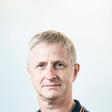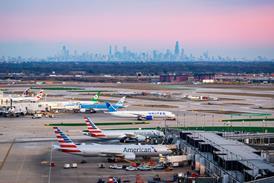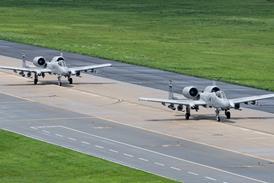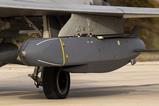The inspirational spark that sets an individual on a path towards a career in the cockpit can come in many ways. Perhaps it is a memorable airline flight, being left in awe after watching an aerobatic team or military fighter display – or just the power of a single image.
Nicola Steevenson’s aspirations were set in stone at the age of 12, when she was sitting across the table from her father as he read a broadsheet newspaper. He drew her attention to a British Airways centrefold advert which depicted a stunning sunrise as viewed from the flightdeck of a Boeing 747, along with the tagline ‘This could be your office’.
“I was transported into that aircraft – I was just sold,” she recalls. “I thought: I want to do that. I want to go flying. It was very evocative, and really hooked me in.”
Aged 13, she joined her local Air Cadets unit, gaining experience on the Scottish Aviation Bulldog and flying whenever she could get the chance. Determined to join the Royal Air Force (RAF) as a fighter pilot, she subsequently embarked on an aerospace engineering degree at The University of Manchester.

The course choice did not impress the boss of her University Air Squadron (UAS), who she remembers “rolled his eyes, and said ‘another one!’”.
Unfortunately, Steevenson’s hopes of becoming a fighter pilot were dashed due to physiology, and in particular her 5ft 4in height.
“One problem I couldn’t overcome was my size – I was told I wasn’t big enough to be a pilot, and my arms weren’t long enough for functional reach,” she says. Also too light to use an ejection seat, she was rejected on medical grounds, and was devastated.
“You need to take these moments as stepping stones, and try to leverage them and see how you can make a success of things,” she says of not giving up on her dream.
The drive to carry on came from her UAS boss, who – seeing clear potential – allowed her to continue flying despite the selection disappointment.
“Sometimes we just need that pivotal person who has faith in us and has our back,” she says. “That gave me an opportunity to join the air force as a navigator – and I realised that I was actually better at navigating than being a pilot.”
QUICK REACTIONS
She spent just over 10 years as a navigator/weapons system operator on the Panavia Tornado F3 interceptor, with the callsign ‘Rosie’. Her service included delivering quick reaction alert cover in the UK and also for the Falkland Islands. She describes the experience of defending the nation’s airspace as ranging from “periods of high stress to spending large amounts of time sitting around in a La-Z-Boy chair”.
The military’s culture of banter is not always easy for those in a minority group, she notes. The RAF only opened its doors to aspiring female fighter pilots in 1989, with the first successful candidate joining a squadron five years later.
“There were times on a fast jet squadron when I didn’t want to stick my hand up as I didn’t understand something, and be labelled the ‘stupid girl’,” she says. “But I realised that you have to take those risks if you want to learn.”
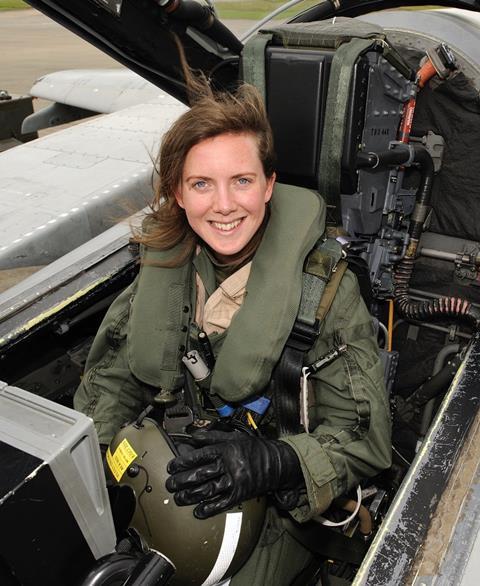
Equally, she recalls an all-female Tornado flight made with her friend Helen Seymour, during which they were given a spoof air traffic control call regarding “birds on finals”.
Steevenson served as an instructor and course mentor, and in 2012 had the distinction of being in the back seat as an F3 made its last operational flight ahead of the type’s retirement.
Later in her RAF career, she became interested in human factors as a topic. This arose while she was working as part of a team conducting development test firings of the MBDA Meteor beyond-visual-range air-to-air missile.
Despite flying with test pilots, she realised that “even the highest-performing teams make mistakes”, and this sparked a curiosity to explore why this happens.
Her interest developed, leading to employment as chief ground instructor for UK regional airline Flybe after leaving the military.
Today, with an MSc qualification in Human Factors and Ergonomics, her experience has included working within aerospace and other sectors, ranging from the UK’s National Health Service to mining. She also holds a non-executive director post with an air ambulance trust, advising on topics including aviation safety.
She stresses the importance of removing the ‘blame game’ from incident investigations, so that lessons can be learned to avoid repeat occurrence.
“We do need accountability, but the vast majority of people go to work to do a good job,” she notes. “We need to look at mistakes and ask ‘why did it make sense to them at the time’, and ‘can we design the system better’?”
“The goal is to optimise human performance, and also system performance,” Steevenson says. She notes that the way cockpits are designed is not optimised for women – or indeed some men – and that 30 years after a woman first flew a fighter for the RAF, “there is still no ability to go to the toilet” while doing so. That fact alone is enough to deter one of her two young daughters from wanting to follow in her footsteps.
SKILLS ADVOCATE
Separately, she co-founded On a mission with her former colleague Seymour – who after piloting the F3 became the first woman to fly the Eurofighter Typhoon operationally. They deliver keynote speaking to a wide variety of commercial organisations, as well as leadership and performance coaching. They also advocate aviation skills, including by talking to cadets, youth organisations, and at schools.
They underscore the importance of not expecting perfection, and being able to learn from failure.
“I was always working in a predominantly male environment,” Steevenson notes. “But just because you’re different doesn’t mean you don’t belong.”
